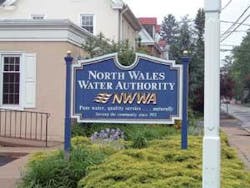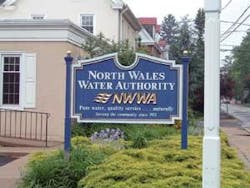Water Line Disasters – Could They be a “Good Thing”
Back just before Christmas I watched in amazement the video footage of people being rescued from a suburban Washington, D.C., street after a water line break turned the street into a raging river.
Although I’ve seen some major water line breaks in my life, the speed and volume of flow down the street was hard to believe.
And, sadly, an evil thought crossed my mind: “Is this a good thing for the water industry?”
It was pretty dramatic footage and couldn’t have come at a better time, given the Congressional interest in an economic stimulus package that would include money for water infrastructure funding.
It’s clear America’s water infrastructure is aging. Anyone working in this industry knows there is a problem. Unfortunately it will take dramatic system failures like this one to help Congress understand the scope of the problem and act in a meaningful way.
While the Maryland break made the national news, thousands of water main breaks are reported across the country every day. A quick visit to Google News turned up hundreds of current articles on water main breaks large and small:
“Double water main break turns neighborhood street into an icy river” “Water main break closes Route 940” “Water main break prompts boil water notice” “Cold snaps water mains.”
I could go on for hours. Actually, it’s fun reading in an odd way. One particularly interesting article focused on a small town’s search for an elusive line break that was leaking 75-80 gallons a minute – enough when combined with normal usage that the town was struggling to keep its lone water tower from running dry.
On a much larger scale, a TV station did a feature story on water lost by its local water utility and found in 2004-05 the city had lost 7 billion gallons of water, at a cost of nearly $9 million. The losses were blamed on water line breaks, theft and faulty meters.
By the time you read this in February, there is a good chance an economic stimulus package will have been approved, or soon will be. I think it’s safe to say money for water infrastructure will be included. But it will only be a tiny part of a much larger package.
While the money will be welcomed and will hopefully jump start an economic recovery, it won’t begin to cover the water industry need.
The U.S. Environmental Protection Agency (EPA), the Government Accountability Office (GAO), and the Water Infrastructure Network (WIN) estimate a $300-$500 billion funding gap over 20 years between what is needed to upgrade and repair the nation’s wastewater infrastructure and how much is being spent.
Even the most optimistic proposals being considered in Congress would provide only about $20 billion for wastewater infrastructure. According to WIN, the federal share of wastewater infrastructure funding has dropped from 78 percent in the 1970s to less than 5 percent today. Given the state of the US economy and the Federal debt, I don’t see that changing any time soon.
Perhaps it will take high-profile water main breaks or water-borne illness to finally drive home the need for increased funding for water infrastructure.
James Laughlin, Editor

